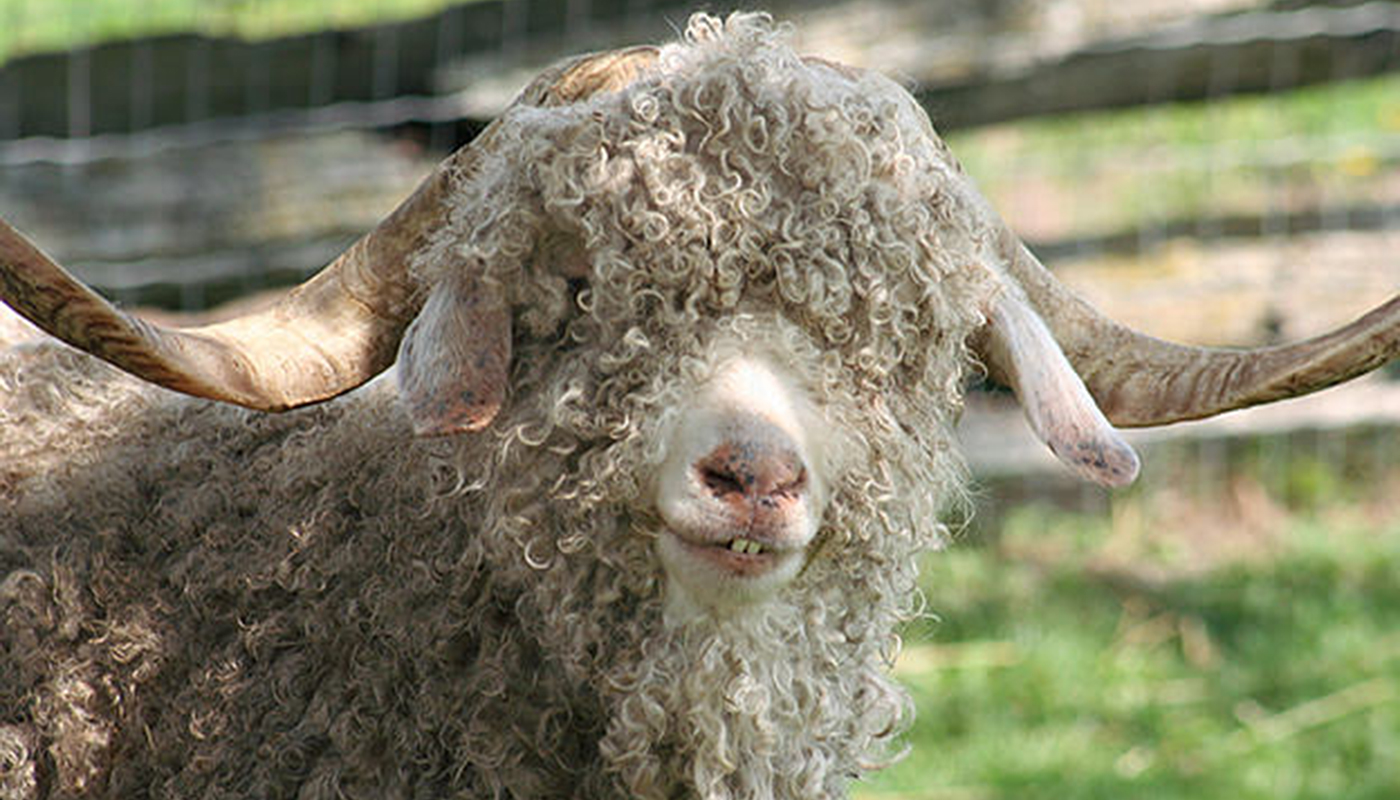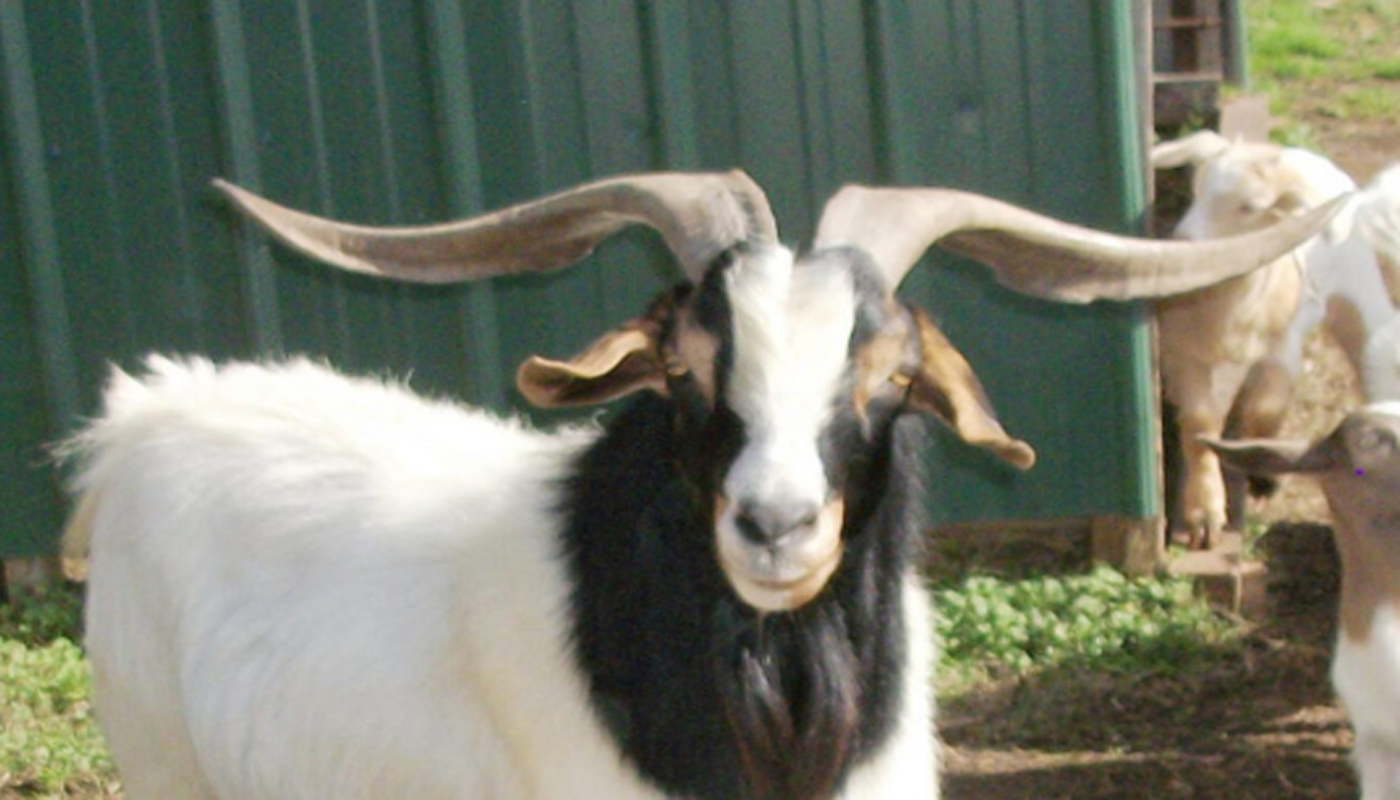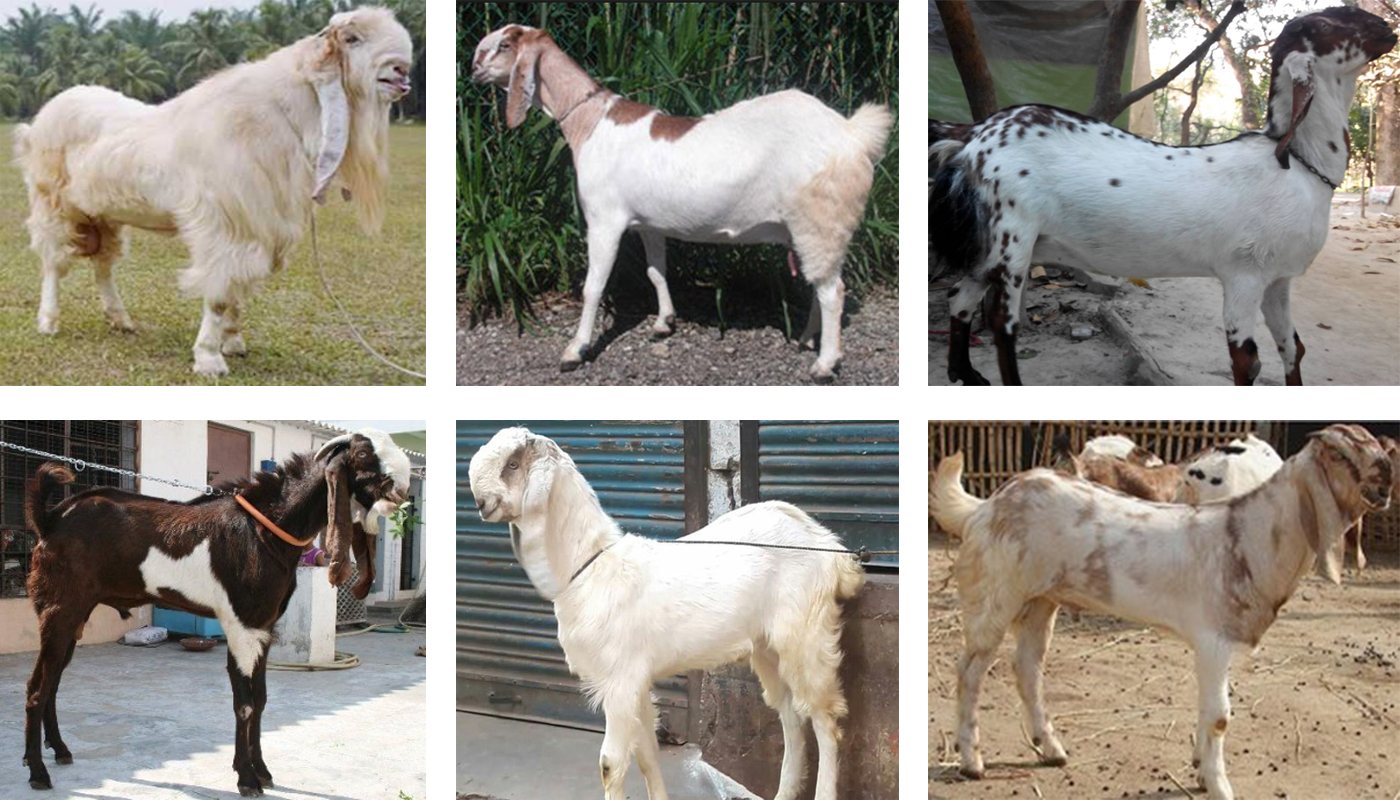
These goats are tall and lanky goats with beautiful black and white Swiss markings. They do not do very well in hot and humid climate but thrive in moderate to cold temperatures.
The produce a high-quality milk that most people are able to drink and have an extended lactation period making them able to be milked for longer than most other goat breeds.
They are not really suited to small grounds as they are a lot happier in an open free-range environment that has a diverse landscape.
British Alpine Goat Quick Profile Overview
| The British Alpine goat comes from a long line of graceful majestic Alpine Mountain Goats that used to freely roam the various mountainous regions of Switzerland | |
| Country of Origin: | England |
| Other Names: | None |
| Breed Size: | Large |
| You may Also Like: | Top 12 Large to Largest Goat Breeds |
| Main Purpose: | Milk |
| Can be used for | Breeding, Milk, Show |
| You may Also Like: | Top 10 Best Dairy Goat Breeds |
| Temperament: | Active roamers that do not do well indoors and prefer to be free-ranged |
| Good with Kids? | They are a bit big and can be intimidating to kids |
| You may Also Like: | 10 Best Goat Breeds to Keep as Pet |
| Ideal Environment: | Diverse landscape that has a lot of greenery for grazing and exploring | Ideal Climate: | They prefer and perform better in more temperate climates |
| Conservation Status: |
Not Listed by the *ALC Status Common |
| Health Issues? | No known health issues |
| Good Starter Goat? | More for the intermediate and up goat owner that has a large farmland/ranch |
| Goat Associations: | British Goat Society |
| Goat Clubs: | Alpines International Club |
| Note: *ALC stands for American Livestock Conservancy | |
PHYSICAL CHARACTERISTICS
| Tall and quite lanky with a thick soft coat and small face | ||
| Color(s): |
Black with white Swiss marking. Although the completely black goat often occurs Both does and bucks exhibit the same coat colors |
|
| Goat⇒ | Doe | buck |
| Breed Weight: | About 135 lbs. | About 170 lbs. |
| Breed Height: | 83 cm at withers | 95 cm at withers |
| Hair: | Short, thick, glossy coat | The males coat is the same as the females |
| Ears: | Tubular, standing up alongside their head and slightly bent. They are usually white with black markings much like their coat. | The male’s ears are the same style as the female’s ears |
| Horns: | The female’s horns are thick and medium length protruding backwards with a curl | The male’s horns are thicker than the females and a little bit longer. They protrude backwards from their head with a curl. |
| Matures at age: | 5 to 15 months | 3 to 15 months |
| Puberty Age: | 5 to 6 months | 4 to 9 months |
| Breeding Age: | 18 months | 1 year |
| Breeding Traits: | 1 Breeding cycle | Cover 20 to 30 does in 1 season |
DOE BREEDING & MILKING INFORMATION
| They breed once a year and during in the spring of each year | |
| Breeding Period/cycle: | Usually lasts 12 to 36 hours Ave. 21 days/18 to 24 days |
| Gestation Period: | 145 to 150 days |
| Kids: | 1 to 3 |
| Good Mothers? | They are okay mothers |
| Lactation Period: | From 284 days to up to 2 years |
| Milking From: | 4 to 6 weeks after kidding |
| Milk Quality: | Excellent, They have a good butterfat and nutrient-rich milk |
| Milking Level: | Normal, As a dairy goat, they tend to be relatively easy to milk |
| You may Also Like: | Top 10 Best Dairy Goat Breeds |
GOOD TO KNOW
| Some more information to read about the British Alpine Goat breed | |
| Where to buy them: | As they are not that prevalent in the USA it is best to check with local goat farmers, Goat sellers or the American Dairy Goat Association and or the American Goat Federation. You can find the links to both these organizations in the “Useful Links” section of this article |
| Agility: | They are incredibly agile and able to climb the most amazing rock faces |
| Interact with other animals: | They like to keep to their own breed. |
GENERAL INFORMATION:
The doe of the British Alpine goat can be found in many dairies as a milking goat. This is partly due to the high quality of her milk, the amounts of milk she produces and because they are capable of an extended lactation period.
Some can even lactate for up to two years.
These goats do not like being cooped up in a barn or stall they much prefer to be out on the range. Therefore, they are more suited to a free-range type of environment that has a lot of pasture and cover for rainy/wet weather. Goats generally do not like to get wet so need places to take shelter during rain and storms.
HISTORY
The British Alpine goat was developed in the early 1900’s from native British goats, Nubian goats and the Toggenburg goat.
The Toggenburg genetics is well visible in the British Alpine as they have the same sort of markings on their coats.
It not widely distributed but can be found throughout Britain, possibly Ireland and Australia where it was exported to in 1958.
They are excellent milkers and as such are found in many a dairy goat farm. Because of their extended lactation period and high-quality milk, they are quite sought after in Britain and Australia.
They have good sized teats with make for easier milking and they are a relatively calm goat making for good all-around milking conditions.
They have been known to be very active and enjoy wandering around the great outdoors exploring rather than being confined to a pasture or barn type structure.
They have been known to perform at their optimum and be in their best health when left to free-range on a large hilly farm or ranch.
They are normally black with white swiss marking but there have been known to be a few goats that are completely black. This is due to a gene called a “recessive gene” that this goat breed is prone to.
Many of the goats are disbudded at around 3 weeks as most dairy goats are but there is a strain of British Alpine that are also polled.
These goats make for an excellent addition to any large farm or ranch.
VIDEO
USEFUL LINKS
- American Goat Society(AGS)
- American Goat Federation (AGF)
- American Dairy Goat Association (ADGA)
- American Cashmere Goat Association (ACGA)
- Canadian Meat Goat Association (CMGA)
- Canadian Goat Society (CGS)
- Animal Shelter (ASPCA)
- American Veterinary Medical Association
- American Poultry Association
- American Animal Welfare Society
- American Animal Control
- American Animal Husbandry Society
 Nigora Goat Breed – Everything You Need to Know
Nigora Goat Breed – Everything You Need to Know 10 Best Goat Breeds for Fiber Production
10 Best Goat Breeds for Fiber Production West African Dwarf Goat Breed – Everything You Need to Know
West African Dwarf Goat Breed – Everything You Need to Know Spanish Goat Breed – Everything You Need to Know
Spanish Goat Breed – Everything You Need to Know Goat Health Guide: Recognizing Signs of Illness & When to Call the Vet
Goat Health Guide: Recognizing Signs of Illness & When to Call the Vet 10 Goat Breeds for Beginner Goat Keepers
10 Goat Breeds for Beginner Goat Keepers Russian White Goat Breed – Everything You Need to Know
Russian White Goat Breed – Everything You Need to Know Verata Goat Breed – Everything You Need to Know
Verata Goat Breed – Everything You Need to Know Top 10 Best Dairy Goat Breeds
Top 10 Best Dairy Goat Breeds Sable Saanen Goat Breed – Everything You Need to Know
Sable Saanen Goat Breed – Everything You Need to Know Jamnapari Goat Breed – Everything You Need to Know
Jamnapari Goat Breed – Everything You Need to Know